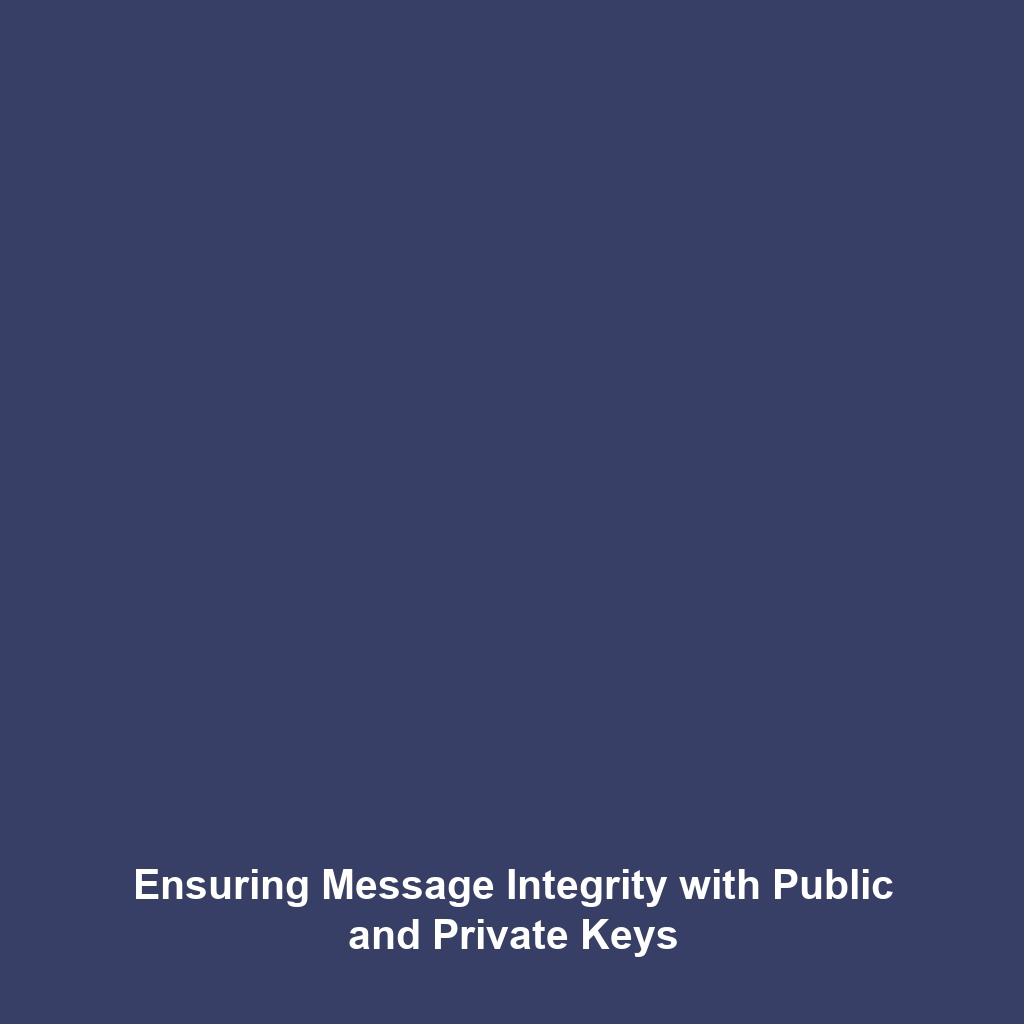Ensuring Message Authenticity and Integrity with Public and Private Keys in Cryptography
Introduction
In the age of digital communication, ensuring message authenticity and integrity is paramount. This is where the principles of cryptography come into play, especially through the use of public and private keys. By leveraging these cryptographic keys, individuals and organizations can secure their messages against tampering and unauthorized access. This foundational aspect of cryptography not only protects sensitive information but also builds trust in digital communications. The significance of this mechanism extends across various sectors, making it a critical area of study and application within cryptography.
Key Concepts
Understanding Public and Private Keys
Public and private keys form a pair used in asymmetric encryption. The public key is shared openly, while the private key is kept secret. Together, they ensure:
- Authenticity: Only the rightful owner of the private key can create a valid signature for a message.
- Integrity: Any alteration in the message can be detected upon verification of the signature.
The Role of Digital Signatures
Digital signatures rely on public and private key pairs to validate messages. When a sender signs a document with their private key, anyone with access to the corresponding public key can verify that the message is indeed from the claimed sender and has not been altered, thus ensuring both authenticity and integrity.
Applications and Real-World Uses
The application of public and private keys in cryptography spans various industries:
- Banking: Secure transactions through digital signatures, confirming both sender and recipient identities.
- E-commerce: Preventing fraud by authenticating online payments.
- Government Communications: Ensuring the authenticity of sensitive documents and communications.
These examples illustrate how public and private keys are used in cryptography to enhance security and trust.
Current Challenges
Despite the effectiveness of public and private key systems, several challenges persist:
- Key Management: Safeguarding private keys against theft or loss.
- Scalability: As networks grow, managing keys securely becomes complex.
- Algorithm Vulnerability: Advances in computing power pose threats to previously secure algorithms.
These challenges highlight ongoing issues in cryptography and the challenges of message authenticity and integrity.
Future Research and Innovations
Research continues to evolve in the field of cryptography, focusing on enhancing the efficiency and security of public and private key systems. Key areas of innovation include:
- Quantum Cryptography: Utilizing quantum mechanics to create virtually unhackable communication systems.
- Post-Quantum Algorithms: Developing new algorithms that can withstand quantum computing threats.
These advancements hold the promise of fortifying message authenticity and integrity in the digital age.
Conclusion
Ensuring message authenticity and integrity through public and private keys is a cornerstone of modern cryptography. By understanding the key concepts, real-world applications, current challenges, and future innovations, stakeholders can better navigate the complexities of secure digital communication. To learn more about related topics, check out our articles on Digital Signatures and Trends in Cryptography.
